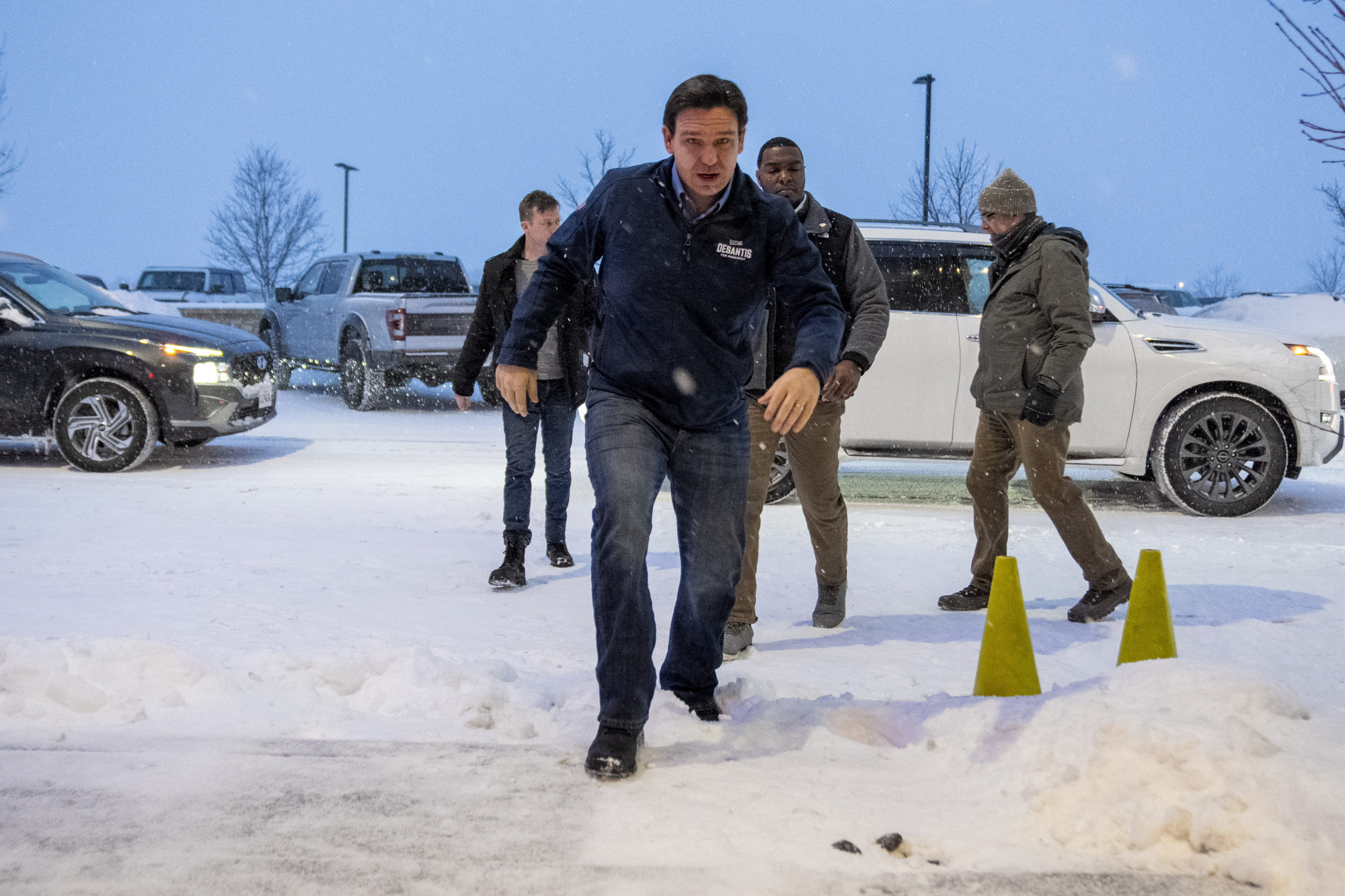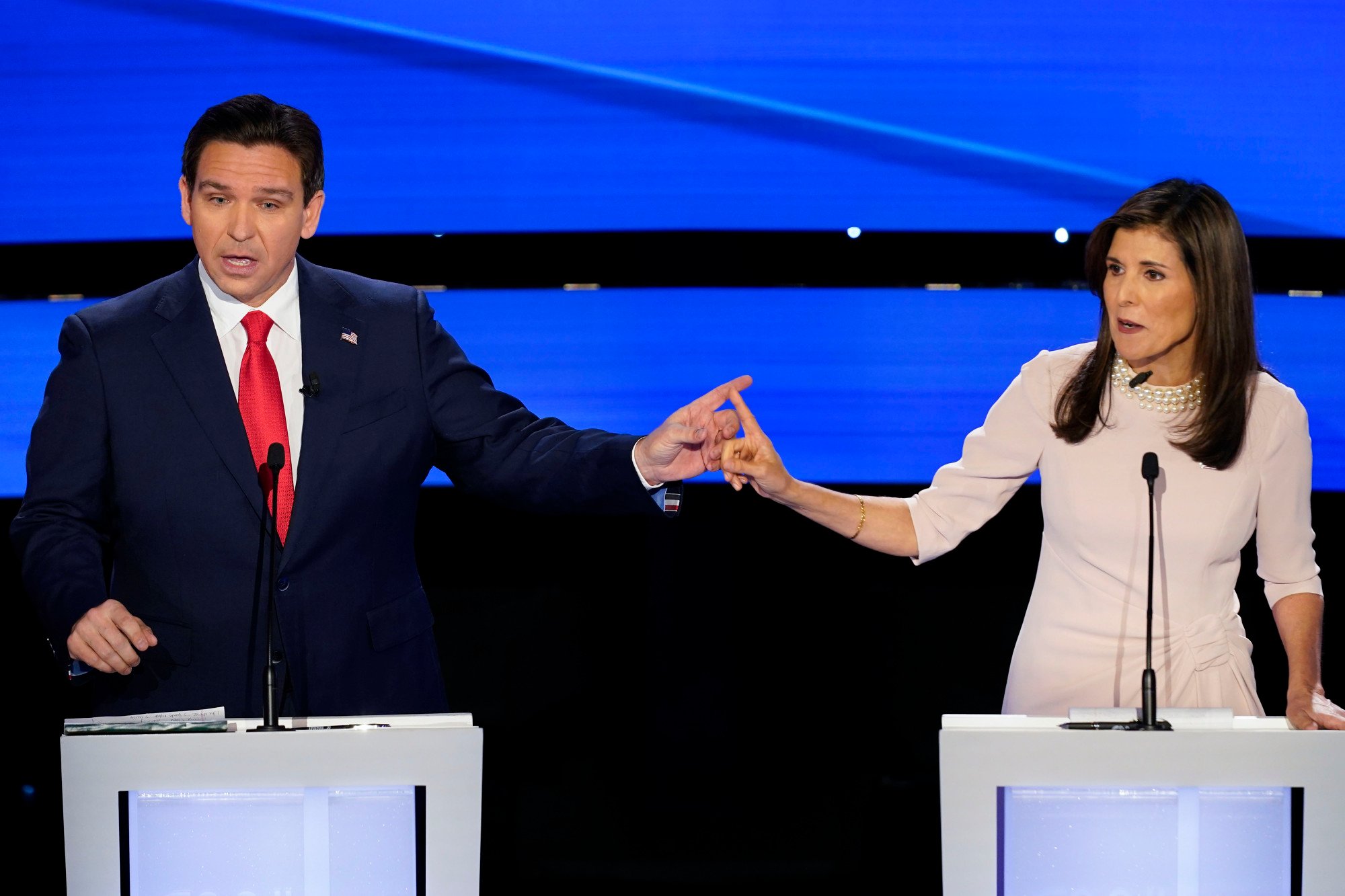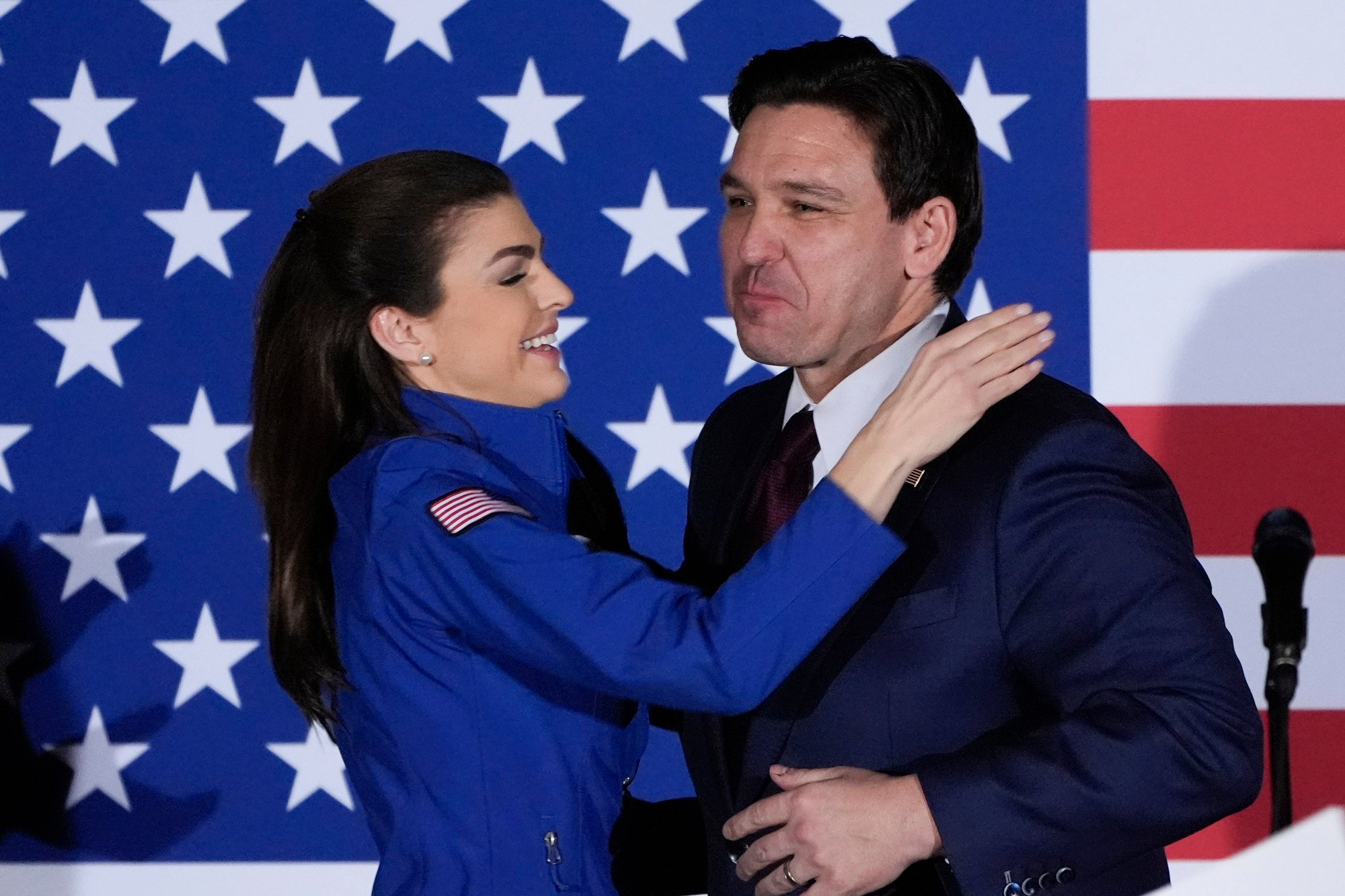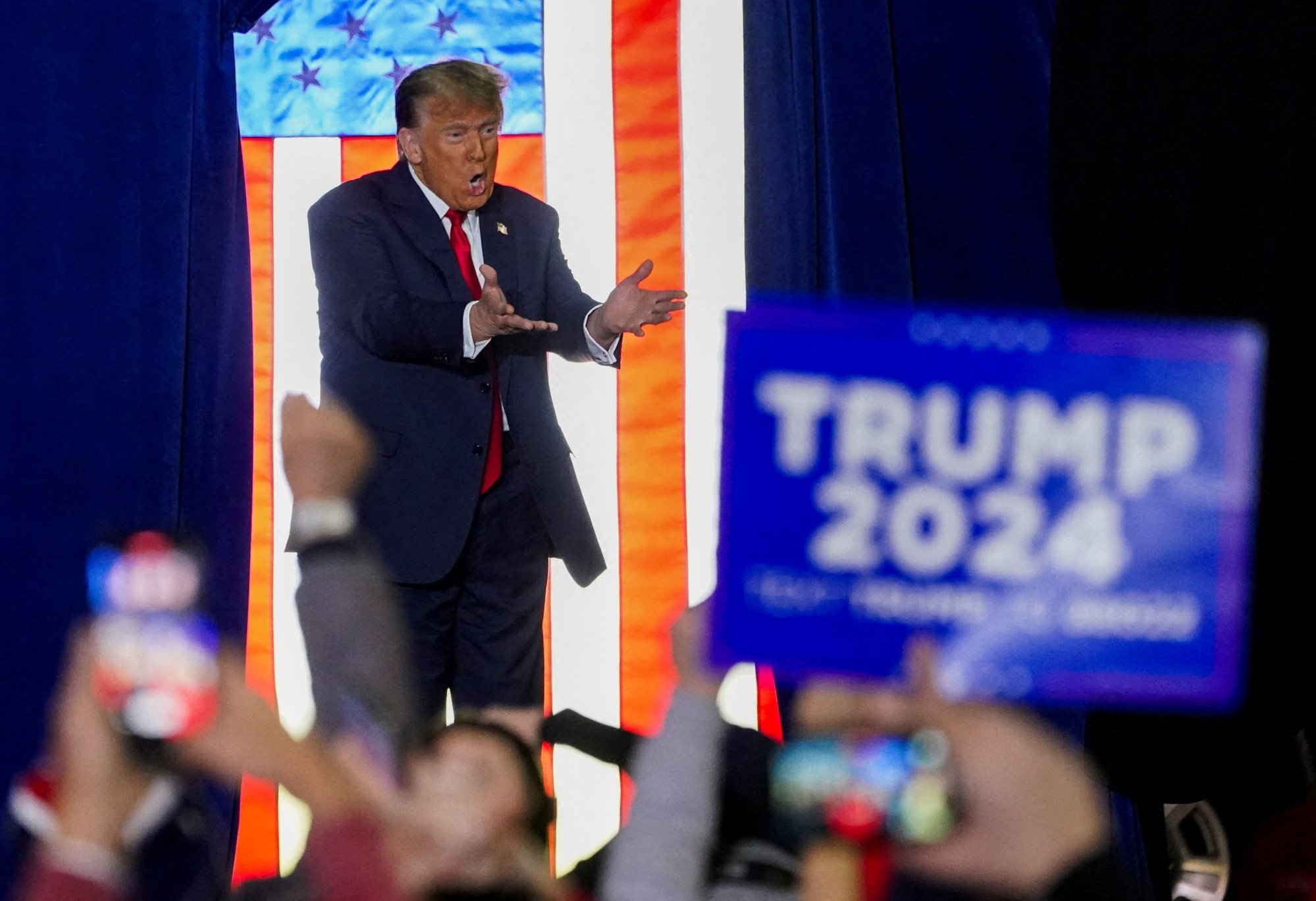The political world will study his campaign as an example of what not to do: strategy miscalculations, financial mismanagement and a failure to fashion a likeable candidate plagued the campaign.

Still, those mistakes were secondary to the original misjudgment that Republican voters would prefer a knock-off in place of the real thing.
“We learned in 2016 that the voters did want Trump, so trying to run a campaign that got to his right on culture issues without really criticising him was going to fail because it had already failed,” said Tim Miller, who worked on Jeb Bush’s presidential race in 2016.
Can Trump be stopped? Key questions after DeSantis exits
Can Trump be stopped? Key questions after DeSantis exits
The DeSantis team is recounting their lessons learned. They wish they’d entered the race sooner and spent more time talking about the economy, rather than Florida, according to people familiar with the strategy. Privately, allies say they wished he was more comfortable with voters.
DeSantis waited six months after former president Donald Trump announced to jump into the Republican primary himself. He instead focused on a conservative agenda in Florida, fuelled by a resounding win in 2022 for a second gubernatorial term.
The lag time gave Trump the ability to define him, giving him nicknames like “DeSanctimonious” and “Tiny D”. He was never able to recover from the barrage of attacks.
It wasn’t supposed to unfold this way. DeSantis was primed to be the main Republican alternative to Trump.
Titans of finance, including Ken Griffin and Thomas Peterffy, bankrolled his gubernatorial run, which raised more than US$200 million from some of the country’s richest families.
Wealthy donors shelled out US$1 million each for his black-tie inauguration gala that included a candlelit dinner catered by the upscale restaurant Carbone.

Shortly after, he privately identified campaign aides and held conversations with Jeff Roe, a Republican strategist who would lead the super political action committee supporting his candidacy.
DeSantis pushed through one of the biggest conservative takeovers in modern history as governor. He ushered through restrictions on abortion, immigration and Chinese companies. He got into a messy fight with the Walt Disney Co. over what he called “woke” policies. That was a major misstep with donors.
Griffin said DeSantis’ Disney feud was “pointless”. Peterffy stopped supporting him after he signed a six-week abortion ban and prohibited books referencing sexual identity in schools. Hedge fund manager Paul Tudor Jones diversified donations to other Republican hopefuls, including Chris Christie.
Anti-Chinese laws take toll in Florida as Ron DeSantis’ presidential run falters
Anti-Chinese laws take toll in Florida as Ron DeSantis’ presidential run falters
The DeSantis team assumed experience running a successful gubernatorial operation would translate into presidential politics. They were so confident that they planned to only speak to friendly, conservative outlets, and avoid national media until after the Republican primary, according to people briefed on strategy. DeSantis, in a recent interview, bemoaned that decision.
DeSantis suffered from a glitchy campaign launch last spring that foreshadowed many self-inflicted missteps.
He opted to announce his candidacy on a Twitter Spaces, alongside billionaire Elon Musk, instead of a traditional launch in front of TV cameras.

The campaign wanted to appear edgy, but it was a technical disaster. His team tried to cast it as so popular it “broke the internet”, but it was widely panned as an amateur move.
The summer months didn’t go better. At a county fair in Iowa, he awkwardly told a young girl that her snow cone looked sugary. He frustrated a group of Iowans by not taking questions after they’d given up their lunch hour to crowd into a room to see him.
“His pitch was all about Florida, which didn’t impress voters in Iowa or New Hampshire,” said Alex Conant, a Republican strategist who worked on Marco Rubio’s 2016 presidential race. “DeSantis never articulated why he’d be a better nominee than Trump.”
DeSantis and Newsom clash over America’s future in TV debate
DeSantis and Newsom clash over America’s future in TV debate
Despite having US$130 million in a super political action committee, the operation struggled with money. His first campaign manager, Generra Peck, hired more than 90 people – even though the super PAC, Never Back Down, was supposed to be responsible for the on-the-ground operations. The huge payroll and DeSantis’ penchant for private planes quickly led to overspending.
By mid-August, they’d done two rounds of lay-offs and replaced Peck with his chief of staff from the governor’s office, James Uthmeier. He had never run a presidential campaign, but he had the trust of the governor and his wife, Casey.
In the fall, they made another strategy shift, going all-in on Iowa. His team hoped the investment in the state would translate into a strong showing in the first contest in the nomination process.

Tensions between the campaign and Never Back Down began to fester as the groups, which aren’t legally allowed to coordinate, jockeyed over messaging and control. The relationship with Roe ultimately went sour. He resigned in December after months of internal feuding.
DeSantis eventually grew more comfortable with talking with voters, engaging with their concerns. It was too late. He’d already earned a reputation of being awkward. He also never figured out how to run against Trump without criticising the Republican front runner.
“He’s a terrific guy and the policies are there, but I think the challenge on connecting with voters has been, in my mind, the biggest challenge that we’ve seen,” said Bruce Rastetter, a Republican donor in Iowa.
The bet on Iowa didn’t pay off. DeSantis came in a distant second place to Trump. The next few weeks also looked bad with Trump holding a strong lead in every state, leading to the decision to suspend the campaign before voting began in the January 23 New Hampshire primary.
“If he had waited to run for president in 2028, I would have voted for him,” said Ozzy Bonilla, a 29-year-old truck driver waiting at a Trump rally hours after DeSantis dropped out. Running in 2024 made DeSantis look like a “traitor”, he said.

